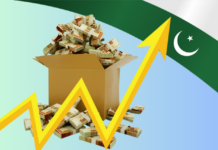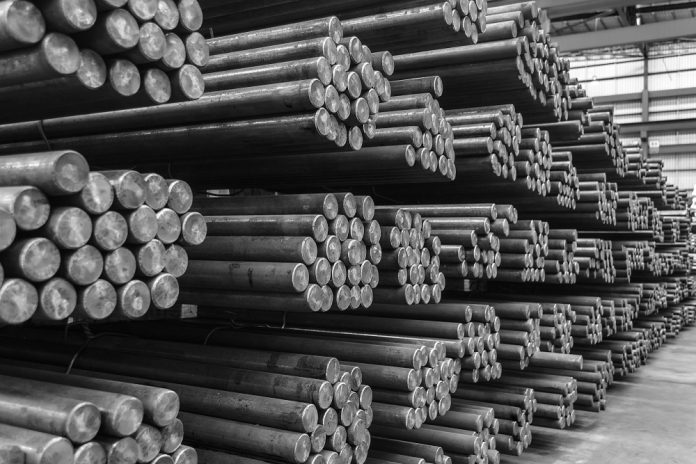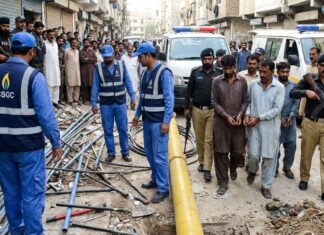ISLAMABAD: Pakistan’s steel industry, already struggling to survive under extreme cost pressures, now faces the threat of collapse as the government moves forward with a proposed tariff rationalization plan without addressing the underlying challenges confronting the sector.
Talking to a group of journalists here on Friday, industry leaders including Mr Abbas Akberali Patron in Chief, Pakistan Association of Large Steel Producers and Chairman Amreli Steels, Mr. Javed Iqbal Malik, Chairman PLASP / CEO Karachi Steels, Mr. Ilyas Aziz Malik, V. Chairman PALSP / Chairman Fazal Steels and Syed Wajid I. Bukhari, Secretary General – PALSP have expressed grave concerns over the hasty reduction of import duties on steel products, warning that such a move, if implemented without simultaneous cost rationalization and sectoral reforms, could lead to massive job losses, closure of domestic mills, a surge in steel imports, and long-term damage to Pakistan’s manufacturing base.
According to them, the most critical factor contributing to the current crisis is the destruction of domestic demand. Industry sources report that nearly 80 to 90 percent of construction activity in the country has come to a halt, directly resulting in a corresponding collapse in demand for steel.
While the government has taken limited steps, such as a reduction in electricity prices and interest rates, these adjustments are not sufficient to compensate for the severely challenging business environment. Power tariffs in Pakistan remain among the highest in the region, currently at 14 cents per kilowatt-hour, compared to China’s 7 cents.
This is especially significant for the steel sector, where power is the second-largest input cost after raw materials. Likewise, Pakistan’s interest rates, though slightly reduced, remain elevated compared to regional peers, further inflating the cost of doing business and significantly increasing the working capital needs of manufacturers following the massive currency devaluation.
Industry leaders have criticized the government’s approach to tariff rationalization, arguing that the process is being driven by individuals, both local and foreign, who lack adequate understanding of Pakistan’s ground realities and industrial challenges. These advisors, they claim, are wrongly projecting that tariff reductions will make Pakistan a net exporter of steel.
The reality, according to sector representatives, is that such measures will erode the remaining competitiveness of local manufacturers and trigger a gradual but certain collapse of the domestic steel sector. Alarmingly, the key ministries traditionally responsible for such policymaking—the Ministry of Commerce, Ministry of Industries, and even the Engineering Development Board—are reportedly being bypassed in the decision-making process.
The steel industry argues that the current import tariff regime is not an undue protectionist measure, but rather a necessary counterbalance to the additional costs imposed by government-regulated tariffs, especially in energy. A detailed analysis submitted to authorities (Annex-A) reveals that the cost disparity between Pakistan and regional competitors due to energy prices alone stands at over Rs. 50,000 per metric ton.
In the absence of this compensation through tariffs, local producers cannot compete with foreign imports.
Globally, steel is treated as a strategic and heavily protected sector. India, the world’s second-largest steel producer, recently increased protection for its domestic industry. Bangladesh offers nearly 90 percent protection to its steel producers, while Pakistan offers less than 50 percent.
Despite this, Pakistan imposes sales tax of PKR 38,000 per ton, whereas in Bangladesh, the corresponding tax is just a few thousand taka. As a result, Bangladesh’s largest steel mill has a production capacity of 2.4 million tons, while in Pakistan, the largest facility with a capacity of 1.1 million tons is currently non-operational.
Industry stakeholders fear that the proposed tariff reductions will further cripple the sector.
The consequences of this policy shift could be devastating. Pakistan’s steel industry consumes nearly 4 billion kilowatt-hours of electricity annually, making it one of the largest industrial consumers. Closure of steel units would create an electricity surplus of 4,000 megawatts, exacerbating the country’s already critical issue of capacity payments to idle power plants.
This would further aggravate the circular debt crisis and increase the financial burden on the power sector. In addition, the gap created by local closures would be filled by imported semi-finished and finished steel products, potentially increasing Pakistan’s import bill by at least USD 1 billion.
Thousands of jobs across the value chain would be lost, effectively exporting employment to countries with more supportive industrial environments.
Industry representatives emphasized that any tariff reduction should only follow the implementation of structural reforms aimed at improving Pakistan’s competitiveness. These include aligning energy and financing costs with regional norms, incentivizing local extraction of iron ore to reduce raw material dependency, and dramatically improving the country’s “ease of doing business” ranking.
At present, Pakistan ranks 110th out of 140 countries; stakeholders argue that the domestic industry should not be exposed to global competition until the country improves its standing to at least the 50th position.
Despite widespread challenges, the steel industry maintains that it does not seek blanket protection. On the contrary, it has made significant investments—over Rs. 100 billion in recent years—in modern European technologies to remain competitive.
The industry is willing to support a gradual and performance-linked reduction in tariffs, provided that reforms are undertaken to reduce input costs and improve the business environment.
Furthermore, the government’s recent reduction in the turnover tax adjustment period from three years to two has drawn criticism. The industry is urging the government to restore the previous five-year adjustment period, which allowed more realistic and sustainable tax planning in a volatile economy.
They have requested the government to postpone the tariff rationalization initiative for at least one year or until the economic situation stabilizes.
The steel industry reiterated its commitment to participating constructively in national industrial policymaking but stressed that decisions affecting its survival must not be taken unilaterally or without expert input from the relevant stakeholders.























